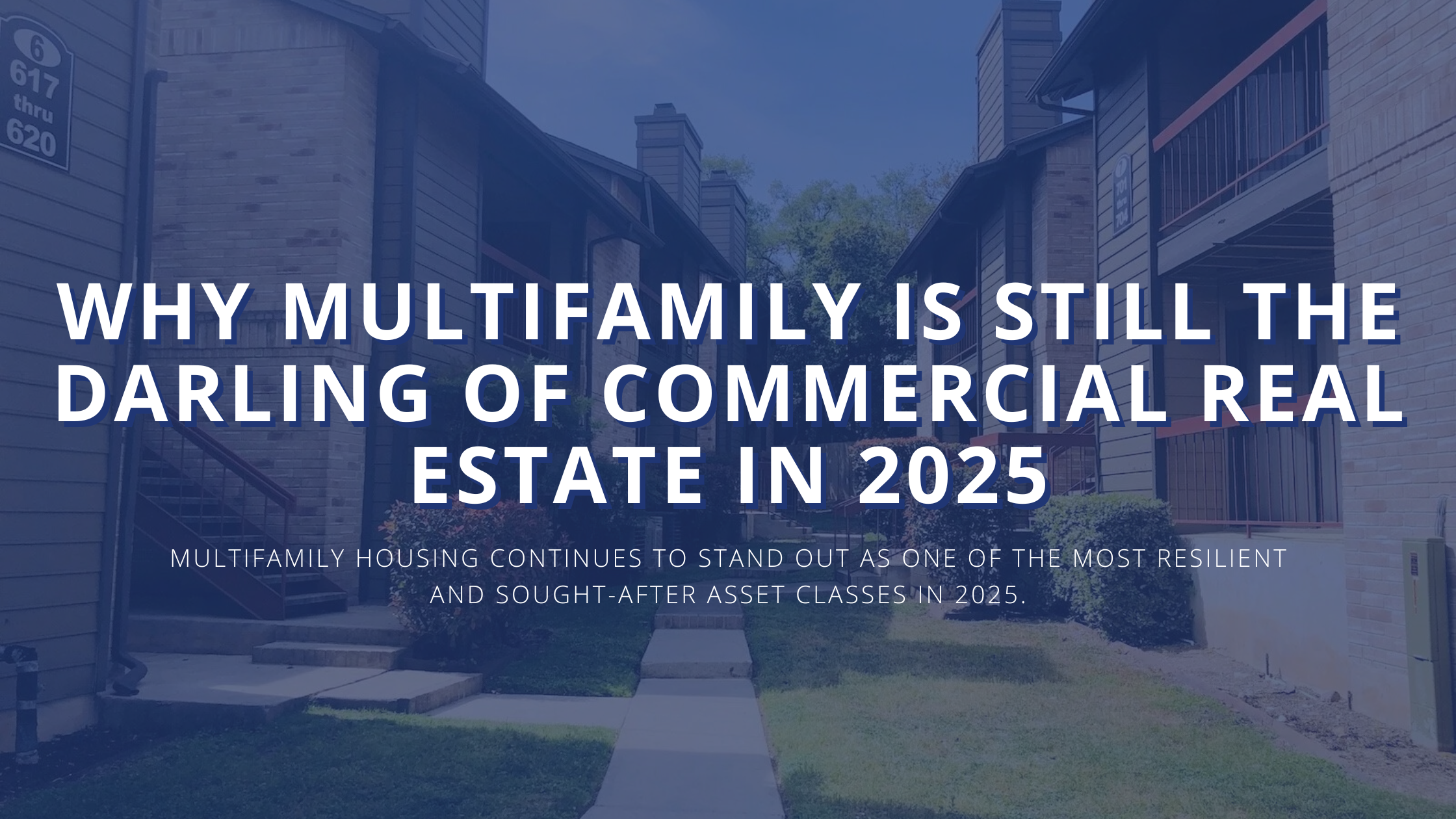In a shifting economic landscape and a tightening commercial real estate market, multifamily housing continues to stand out as one of the most resilient and sought-after asset classes in 2025. While other sectors like office and retail have seen volatility and structural headwinds, multifamily investments have consistently demonstrated long-term value, operational stability, and reliable income for investors.
At CREI Partners, we remain focused on multifamily for strategic reasons. Whether you’re a seasoned investor or just beginning your journey, understanding why multifamily continues to outperform can help you make informed decisions and build lasting wealth.
1. Demand for Housing Remains High
The foundation of any strong investment is demand—and multifamily demand remains robust in 2025.
Despite interest rate fluctuations and economic uncertainty in recent years, the U.S. is still facing a significant housing shortage. According to multiple housing studies, the country is short millions of housing units, particularly in high-growth markets like Texas and the Southeast, where CREI Partners actively invests.
As homeownership becomes increasingly out of reach for many due to higher mortgage rates and rising home prices, more people are turning to rental housing—especially well-maintained, professionally managed multifamily communities.
This sustained demand translates to stronger occupancy rates, consistent rental income, and long-term growth potential for investors.
2. Multifamily is a Hedge Against Inflation and Volatility
Multifamily assets are uniquely positioned to adapt in times of inflation and market volatility.
Unlike other commercial sectors with long-term lease structures (such as office or industrial), multifamily leases typically renew every 12 months. This allows operators to adjust rents in real time with inflation or local market trends, helping preserve cash flow and purchasing power.
In uncertain times, investors seek assets that not only protect capital but also deliver real returns. Multifamily continues to offer both.
3. Favorable Supply-Demand Imbalance
While new development has increased in some metro areas, rising construction costs, labor shortages, and tighter lending standards have slowed many new multifamily projects nationwide.
This reduced pipeline, combined with growing renter demand, creates a favorable supply-demand imbalance—especially in secondary and tertiary markets. These are the types of markets where CREI Partners focuses our efforts, identifying opportunities with high yield potential and low institutional saturation.
As a result, existing assets in strong locations continue to benefit from rising demand, limited competition, and the opportunity to create value through renovations and management efficiencies.
4. Financing Has Tightened—but Not Closed
It’s true that higher interest rates have made financing more complex. However, experienced sponsors with strong balance sheets, conservative underwriting, and a proven track record are still able to secure financing—especially for cash-flowing assets or projects with clear value-add potential.
At CREI Partners, we remain disciplined in our acquisitions, focusing on deals where the fundamentals are strong regardless of short-term debt conditions. We continue to build relationships with lenders and structure deals that prioritize investor returns and downside protection.
The multifamily sector, particularly in core growth markets, continues to attract capital due to its predictable income, tax advantages, and potential for long-term appreciation.
5. It Aligns with Shifting Demographics and Lifestyle Trends
As lifestyle preferences shift, more people are choosing to rent—not because they have to, but because they want to.
From young professionals seeking flexibility to retirees downsizing for convenience, rental housing appeals to a wide demographic. Build-to-rent communities and thoughtfully designed multifamily properties—like those in our portfolio—offer the amenities and ease of living that today’s renters value.
This generational shift toward renting as a lifestyle, rather than a temporary solution, adds yet another layer of long-term demand.
6. Tax Advantages Enhance Net Returns
Multifamily investing also offers meaningful tax advantages that enhance overall return potential. With strategies such as bonus depreciation, cost segregation, and the use of passive losses to offset passive income, investors often see significant tax savings.
In fact, with 100% bonus depreciation on passive income returning in 2025 through recent legislation, passive investors have a unique window to capture large deductions—especially when investing with operators who understand how to structure deals to maximize those benefits.
(As always, CREI Partners recommends consulting a tax professional to understand how these advantages apply to your specific situation.)
Conclusion: Multifamily Still Delivers
While no investment is without risk, multifamily real estate has continued to earn its place as the “darling” of commercial real estate because it delivers where it matters most—cash flow, stability, adaptability, and long-term growth.
At CREI Partners, we invest alongside our investors and take a relationship-first approach to real estate. Our commitment to strategic markets, thoughtful underwriting, and long-term partnerships is why multifamily remains the core of our investment strategy in 2025 and beyond.
If you’re looking for a way to build passive income, preserve wealth, and participate in one of the most resilient asset classes available, multifamily real estate may be the right fit for your portfolio.
To learn more please visit our website or reach out to our Investor Relations, Shelbi, via email at shelbi@creipartners.com.


 Subscribe to our newsletter so you never miss out on new investment opportunities, podcasts, blogs, news and events.
Subscribe to our newsletter so you never miss out on new investment opportunities, podcasts, blogs, news and events.